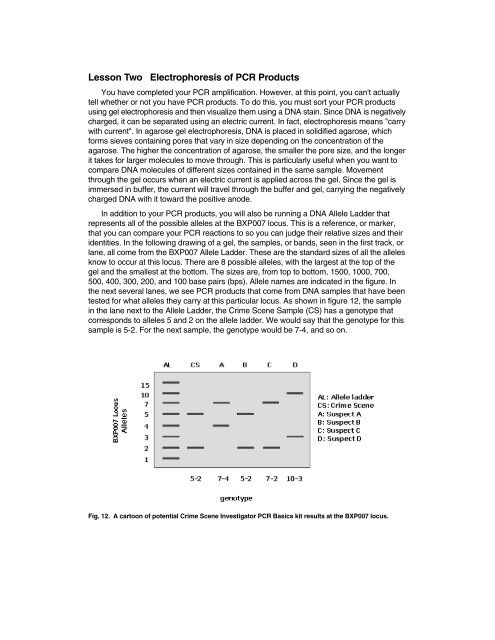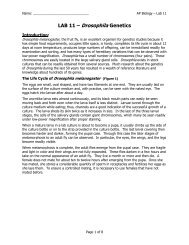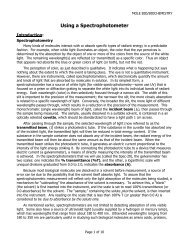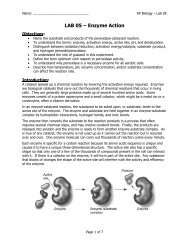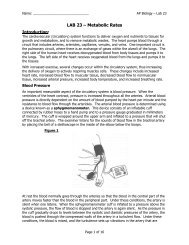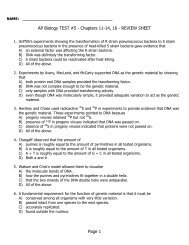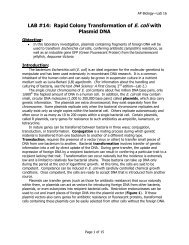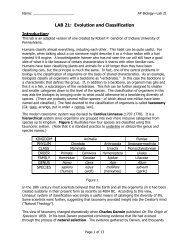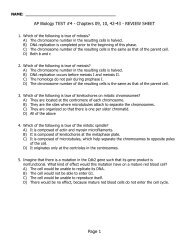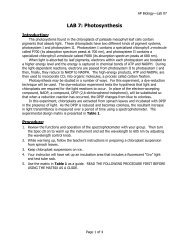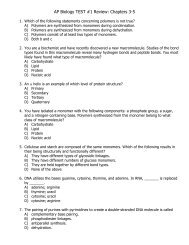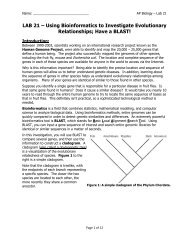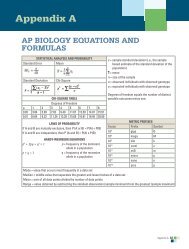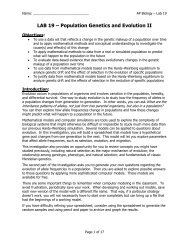Crime Scene Investigator PCR Basics⢠Kit
Crime Scene Investigator PCR Basics⢠Kit
Crime Scene Investigator PCR Basics⢠Kit
You also want an ePaper? Increase the reach of your titles
YUMPU automatically turns print PDFs into web optimized ePapers that Google loves.
Lesson Two Electrophoresis of <strong>PCR</strong> Products<br />
You have completed your <strong>PCR</strong> amplification. However, at this point, you can't actually<br />
tell whether or not you have <strong>PCR</strong> products. To do this, you must sort your <strong>PCR</strong> products<br />
using gel electrophoresis and then visualize them using a DNA stain. Since DNA is negatively<br />
charged, it can be separated using an electric current. In fact, electrophoresis means "carry<br />
with current". In agarose gel electrophoresis, DNA is placed in solidified agarose, which<br />
forms sieves containing pores that vary in size depending on the concentration of the<br />
agarose. The higher the concentration of agarose, the smaller the pore size, and the longer<br />
it takes for larger molecules to move through. This is particularly useful when you want to<br />
compare DNA molecules of different sizes contained in the same sample. Movement<br />
through the gel occurs when an electric current is applied across the gel. Since the gel is<br />
immersed in buffer, the current will travel through the buffer and gel, carrying the negatively<br />
charged DNA with it toward the positive anode.<br />
In addition to your <strong>PCR</strong> products, you will also be running a DNA Allele Ladder that<br />
represents all of the possible alleles at the BXP007 locus. This is a reference, or marker,<br />
that you can compare your <strong>PCR</strong> reactions to so you can judge their relative sizes and their<br />
identities. In the following drawing of a gel, the samples, or bands, seen in the first track, or<br />
lane, all come from the BXP007 Allele Ladder. These are the standard sizes of all the alleles<br />
know to occur at this locus. There are 8 possible alleles, with the largest at the top of the<br />
gel and the smallest at the bottom. The sizes are, from top to bottom, 1500, 1000, 700,<br />
500, 400, 300, 200, and 100 base pairs (bps). Allele names are indicated in the figure. In<br />
the next several lanes, we see <strong>PCR</strong> products that come from DNA samples that have been<br />
tested for what alleles they carry at this particular locus. As shown in figure 12, the sample<br />
in the lane next to the Allele Ladder, the <strong>Crime</strong> <strong>Scene</strong> Sample (CS) has a genotype that<br />
corresponds to alleles 5 and 2 on the allele ladder. We would say that the genotype for this<br />
sample is 5-2. For the next sample, the genotype would be 7-4, and so on.<br />
Fig. 12. A cartoon of potential <strong>Crime</strong> <strong>Scene</strong> <strong>Investigator</strong> <strong>PCR</strong> Basics kit results at the BXP007 locus.<br />
40


